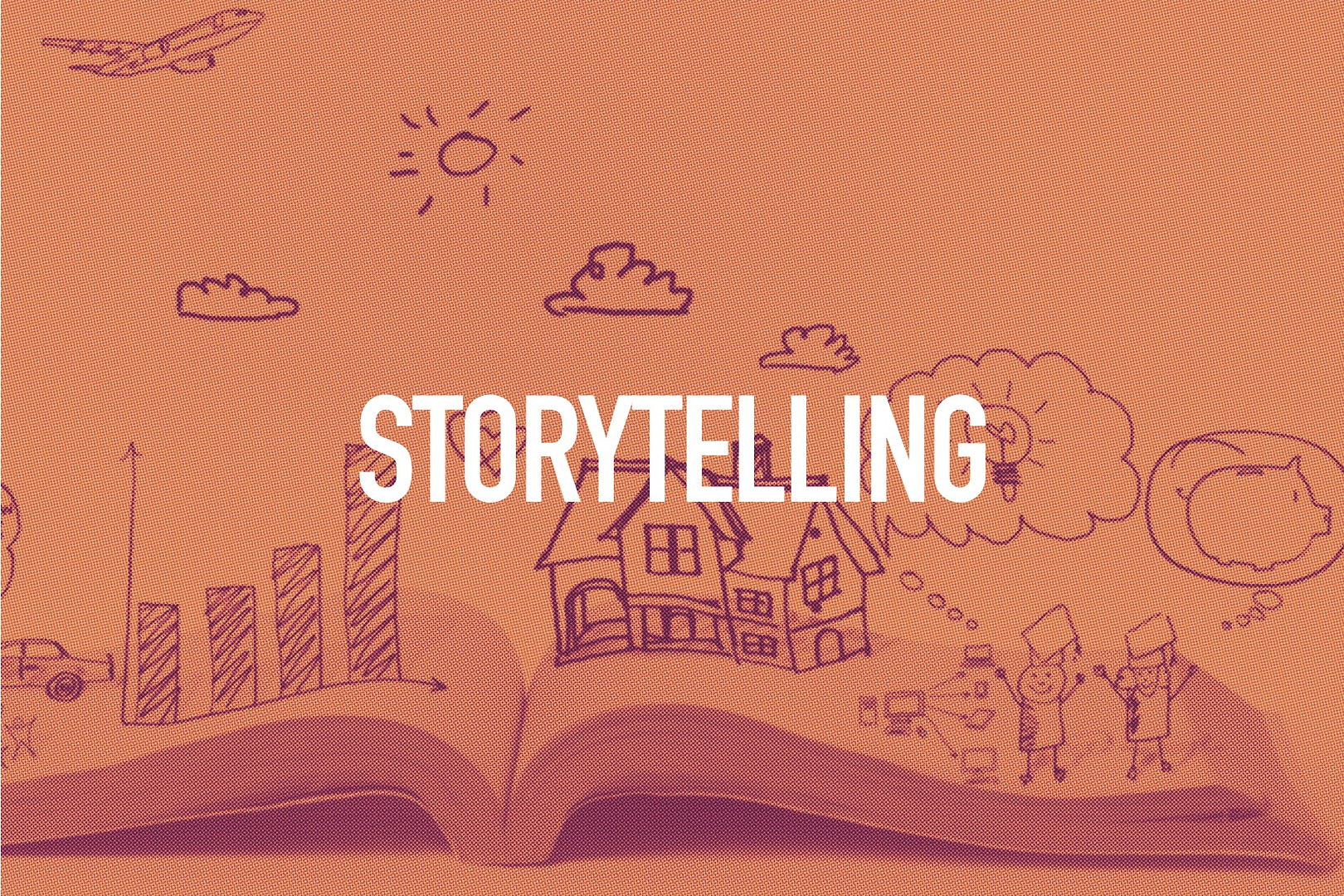Table of Contents
Overview of story ads in digital marketing
Story ads, a compelling format within digital marketing, harness the power of narrative to capture attention and evoke emotions. Originating from the age-old tradition of storytelling, these ads are crafted to convey messages in a way that resonates deeply with audiences. Unlike traditional advertisements, which might directly promote a product or service, story ads focus on weaving a narrative that viewers can connect with personally. This connection is about selling and creating a memorable experience that can influence perception and behaviour long after the ad has been played.
The integration of story ads into digital platforms has transformed how brands engage with their audience. Platforms like Instagram, Facebook, and YouTube offer advertisers unique opportunities to dynamically and interactively deliver these stories. Leveraging these platforms’ visual and auditory capabilities, marketers can create immersive experiences that are more likely to leave a lasting impact.
Importance of story-driven content
In the digital age, where consumers are bombarded with countless daily advertisements, standing out becomes crucial. Story-driven content offers a way to break through the noise and capture the consumer’s scarce attention. Psychological studies suggest that stories are more memorable than facts because they stimulate the brain in ways that dry presentations do not. When information is delivered through a narrative, it can be easier to comprehend and more likely to be recalled later, which is a significant advantage in marketing.
Furthermore, story ads appeal to the emotional side of consumers. They have the power to elicit strong emotional responses—joy, sadness, inspiration—thereby forging a stronger bond between the brand and the consumer. This emotional engagement is key in driving consumer decisions, making it a powerful tool in a marketer’s arsenal. When people feel a personal connection to a story, they are more likely to take the desired action, whether it’s making a purchase, signing up for a newsletter, or sharing the content with others.
Through strategic narrative construction, brands can craft messages that are not only heard but felt, thereby enhancing the effectiveness of their marketing efforts and building a loyal customer base.
Psychological triggers in story ads
Emotional engagement through storytelling
Storytelling is a profound mechanism for creating emotional engagement, an essential ingredient in the psychology of advertising. By incorporating relatable characters, conflicts, and resolutions, story ads tap into the viewer’s emotions, making the ad experience more impactful and memorable. This emotional connection is often what drives the effectiveness of an ad, as consumers are more likely to engage with and remember brands that evoke feelings such as happiness, nostalgia, or empathy.
The psychological concept of “transportation” explains how stories captivate us. Transportation theory suggests that when people lose themselves in a story, they are transported to another place and time, experiencing the emotions and actions of the characters as if they were their own. This immersive experience can lead to powerful emotional responses and, significantly, a greater persuasion potential. Thus, marketers use storytelling to transport viewers, leveraging the narrative to subtly influence their attitudes and behaviours towards a brand or product.
The role of narrative in consumer decision-making
Narratives in advertising also play a crucial role in shaping consumer decisions. According to the narrative paradigm, humans are inherently storytellers, and we understand and interpret the world in narrative forms. This paradigm suggests that we are more persuaded by credible stories than by logical arguments alone. In the context of marketing, this means that consumers are likely to be influenced by ads that provide a compelling story—one that fits well with their existing beliefs and experiences.
Psychological research underlines the effectiveness of narrative advertising by demonstrating that consumers who find a story relatable or see themselves reflected in the characters and situations are more inclined to adopt the message of the ad. For instance, a story ad that showcases a customer overcoming a problem through a product or service can lead viewers to imagine themselves in similar circumstances, enhancing the perceived value of the offering.
Moreover, the sequencing of events in a narrative can guide consumers through a psychological journey. The structure typically follows a setup, confrontation, and resolution, which aligns well with problem-solving processes in the consumer’s mind. By presenting a problem (setup), escalating it (confrontation), and then resolving it (resolution), the ad mirrors the cognitive process of recognising a need, contemplating solutions, and deciding to purchase. This mirroring can effectively nudge the viewer towards making a purchase decision, as the resolution of the story provides a satisfying conclusion that subtly endorses the product or service.
Through understanding and harnessing these psychological triggers, marketers can create story ads that not only entertain but also deeply influence consumer behaviour, paving the way for more effective marketing strategies. In the next section, we will delve into how data-driven insights are integrated into storytelling to enhance the relevance and effectiveness of story ads.
Data-driven storytelling
How data informs story creation
In the realm of digital marketing, the integration of data analytics into storytelling marks a significant evolution. Data-driven storytelling involves using insights gleaned from consumer data to tailor narratives that are not only compelling but also highly targeted and relevant to specific audience segments. This approach ensures that story ads are crafted with a deep understanding of the audience’s preferences, behaviours, and emotional triggers.
Marketers use various data sources, such as social media analytics, website traffic, and consumer feedback, to construct a detailed profile of their target audience. This profiling helps in identifying key themes and elements that resonate most with the audience. For instance, data may reveal that a particular demographic is more engaged with stories that involve adventure and travel, prompting marketers to create ads with these themes to attract this segment.
Moreover, data analytics aids in refining the storytelling process by providing feedback on what works and what doesn’t. A/B testing of different story scenarios and narrative styles can offer concrete evidence about the more effective approach, allowing marketers to optimise their ads for better engagement and conversion rates. This methodical use of data ensures that the emotional and psychological impact of story ads is maximised, making them not only artistic but also scientific in their execution.
Examples of successful data-driven story ads
Several leading brands have successfully implemented data-driven storytelling in their marketing strategies. For example, a famous sports apparel brand used data analytics to understand that their customers were highly motivated by stories of personal triumph and perseverance. They crafted a series of ads featuring real-life athletes overcoming adversity, which significantly boosted their brand engagement and sales. These ads did not just tell a story; they told the right story, one that mirrored the aspirations and emotions of their target audience.
Another example is a popular streaming service that utilises viewer data to create content and ads that reflect viewers’ preferences and viewing habits. Analysing data on what genres and themes are most popular among different demographics, the service can create highly personalised ad content that increases viewer engagement and subscription rates.
The impact of visuals in story ads
Psychological impact of visuals
Visuals play a critical role in the effectiveness of story ads. The human brain processes images faster than text, and visual information is transmitted to the brain at a much quicker rate, which is why images can immediately attract attention and evoke emotions. The right visuals can enhance a narrative, making it more engaging and memorable.
Research in visual psychology suggests that colours, imagery, and visual composition have profound impacts on emotional responses and can significantly influence a viewer’s perception and actions. For example, warm colours like red and yellow can evoke feelings of excitement and optimism, while cool colours like blue and green tend to have calming effects. Effective story ads often use these principles to reinforce the mood of the narrative and provoke the desired emotional responses from the audience.
Case studies of visual effectiveness in story ads
One notable case study involves a global beverage company that used vibrant, dynamic visuals in a campaign that celebrated diversity and inclusion. The visuals featured people from various backgrounds enjoying their product at different gatherings around the world. This not only supported the narrative of universal enjoyment but also appealed emotionally to a global audience, enhancing the brand’s image as inclusive and universally beloved.
Another example is a luxury car brand that uses high-quality, sleek visuals to tell a story of sophistication and performance. The visuals in their ads are carefully designed to highlight the car’s design and features, often paired with a storyline that emphasises freedom and adventure. This not only draws the viewer’s attention but also aligns the product with a lifestyle that their target demographic aspires to.
In conclusion, visuals are not just supplementary elements in story ads; they are integral to the storytelling process, enhancing the narrative’s impact and helping to solidify the connection between the brand and the consumer. In the following sections, we will explore how narrative structures can be levered to maximise the effectiveness of story ads further.
Narrative structures and their effectiveness
Common narrative arcs in story ads
Narrative structures in advertising play a pivotal role in guiding audience emotions and decision-making. The classic narrative arcs, drawn from traditional storytelling, can be adapted to the short format of story ads to create powerful, memorable experiences. Common structures include:
- The Hero’s Journey: This arc involves a protagonist who encounters a challenge, faces trials, receives aid, and ultimately triumphs. This narrative is compelling as it reflects the universal tale of overcoming obstacles, resonating deeply with audiences who see themselves as the hero in their own lives.
- Before and After: This structure shows the protagonist before and after using a product or service, highlighting the transformation or the solution it provides. It is particularly effective in advertisements for products or services that promise a significant change, such as beauty products or educational services.
- Problem-Solution: A straightforward narrative that introduces a problem and then presents the product or service as the solution. This structure is effective due to its simplicity and direct connection to the viewer’s needs.
Each narrative structure serves to create a cohesive and engaging story that mirrors the audience’s experiences or aspirations, enhancing the ad’s persuasive power.
Analysis of the most successful narrative structures
Research and case studies have shown that certain narrative structures tend to perform better in specific contexts. For example, the Hero’s Journey often achieves high engagement in campaigns aimed at motivating or inspiring the audience, as seen in ads for sports brands and motivational speakers. Meanwhile, the Before and After structure tends to excel in direct response advertising, such as in weight loss or beauty enhancement products, where the visual evidence of change is compelling.
Furthermore, the Problem-Solution narrative is particularly effective in B2B marketing, where the clarity of the message about the product’s benefits is paramount. Studies suggest that this narrative structure enhances recall and comprehension, which are crucial for products requiring a higher degree of consumer understanding.
Consumer behaviour and story ads
Insights into consumer responses to story ads
Understanding consumer behaviour is key to crafting effective story ads. Psychological insights into how consumers process information and make purchasing decisions can greatly enhance the strategic approach to narrative ads. For example, the phenomenon of identification—where the viewer sees themselves in the characters of the story—can lead to stronger emotional connections and increased persuasion. Brands that master this connection often see higher conversion rates as the audience is more likely to relate to and remember the ad.
Emotion is another powerful driver in consumer responses to ads. Emotional storytelling can trigger a range of feelings from empathy to joy, each of which can be strategically leveraged to align with the brand’s goals. For instance, ads that evoke positive emotions are likely to be shared more on social media, expanding their reach and impact.
How stories influence purchasing decisions
Stories influence purchasing decisions by framing the product or service within a context that the audience finds meaningful or aspirational. A well-crafted story ad can make the product a key component in achieving a desirable outcome or resolving a relatable conflict. This not only increases the perceived value of the product but also enhances brand loyalty as consumers feel a deeper connection with the brand’s narrative.
Moreover, storytelling can simplify complex information, making it easier for consumers to understand and appreciate the benefits of a product. This is particularly relevant in industries like technology or finance, where the details of the products may be complex but are crucial for making informed purchasing decisions.
Conclusion
Summary of key points
This exploration of the psychology of story ads has illuminated how narrative techniques, supported by data analytics and compelling visuals, significantly enhance digital marketing strategies. We’ve seen that emotional engagement through storytelling not only captures attention but also deeply influences consumer behaviour, guiding both the emotional response and the decision-making process. The role of narrative structures, such as the Hero’s Journey or the Problem-Solution framework, provides familiar paths that resonate with audiences, making the ads more relatable and effective.
Additionally, the integration of data-driven insights into the storytelling process allows for a more targeted and impactful approach, ensuring that the narratives are not just compelling but also highly relevant to the intended audience. Visual elements further amplify this effect by engaging the senses and reinforcing the emotional undercurrents of the narrative, thereby enhancing recall and persuasion.
The future of story ads in marketing
Looking forward, the evolution of story ads is set to accelerate with advancements in technology. Artificial intelligence and machine learning are beginning to play pivotal roles in crafting customized narratives at scale. These technologies can analyse vast amounts of consumer data to generate insights that inform story creation, making each ad more personalised and effective. Furthermore, emerging technologies like augmented reality (AR) and virtual reality (VR) offer new realms for immersive storytelling, potentially revolutionising how brands engage with their audiences by offering them not just a story to watch but a world to step into.
As digital landscapes evolve and consumer expectations rise, the ability to tell a compelling story that connects on a personal level will continue to be a crucial differentiator in the crowded market. Brands that can harness the power of story ads effectively, balancing creativity with analytical rigor, are likely to lead the way in capturing consumer loyalty and driving business success.
Story ads represent a blend of art and science, where creativity is informed by data, and emotional resonance is achieved through strategic narrative construction. As marketers, embracing this blend and refining our storytelling techniques will be essential in crafting campaigns that not only reach but resonate with, engage, and inspire our audiences, leading them on a journey that culminates in both brand growth and consumer satisfaction.
FAQs
What makes a story ad effective in digital marketing?
A story ad becomes effective when it successfully engages viewers by triggering emotional responses and offering relatable content. The use of narrative structures that reflect universal themes, like overcoming adversity or achieving a dream, helps create a deeper connection with the audience. Furthermore, integrating data-driven insights ensures the content is tailored to the preferences and behaviours of the target demographic, enhancing relevance and impact.
How can data improve the impact of story ads?
Data analytics play a crucial role in crafting impactful story ads by providing insights into audience behaviours, preferences, and engagement patterns. This information allows marketers to tailor narratives that are more aligned with the audience’s expectations and emotional triggers. Additionally, continuous data analysis enables the optimization of these ads based on real-time feedback, ensuring higher relevance and effectiveness.
What are the most successful visual strategies in story ads?
Successful visual strategies in story ads often involve the use of compelling imagery that complements the narrative, color schemes that evoke the right emotions, and dynamic compositions that keep the viewer engaged. Incorporating elements such as close-ups on emotional facial expressions or vivid, memorable scenes can significantly enhance the emotional impact and retention of the ad.
Can AI be used to create story ads?
Yes, artificial intelligence can be extensively used to create story ads. AI technologies can analyse large datasets to uncover insights about what content performs best with certain audiences, automate the creation of personalised ads, and even generate creative elements like writing scripts or editing video content. AI can help streamline the production process while ensuring that the ads are optimized for maximum engagement.
What future trends are expected in the use of story ads?
Future trends in story ads are likely to include increased personalisation through AI, greater integration of interactive elements, and the use of augmented and virtual reality to create more immersive experiences. As technology evolves, we can also expect more sophisticated use of data analytics to refine storytelling techniques and target audiences more accurately. Additionally, sustainability and ethical storytelling are becoming important to consumers, which may shape the themes and strategies used in future story ads.







